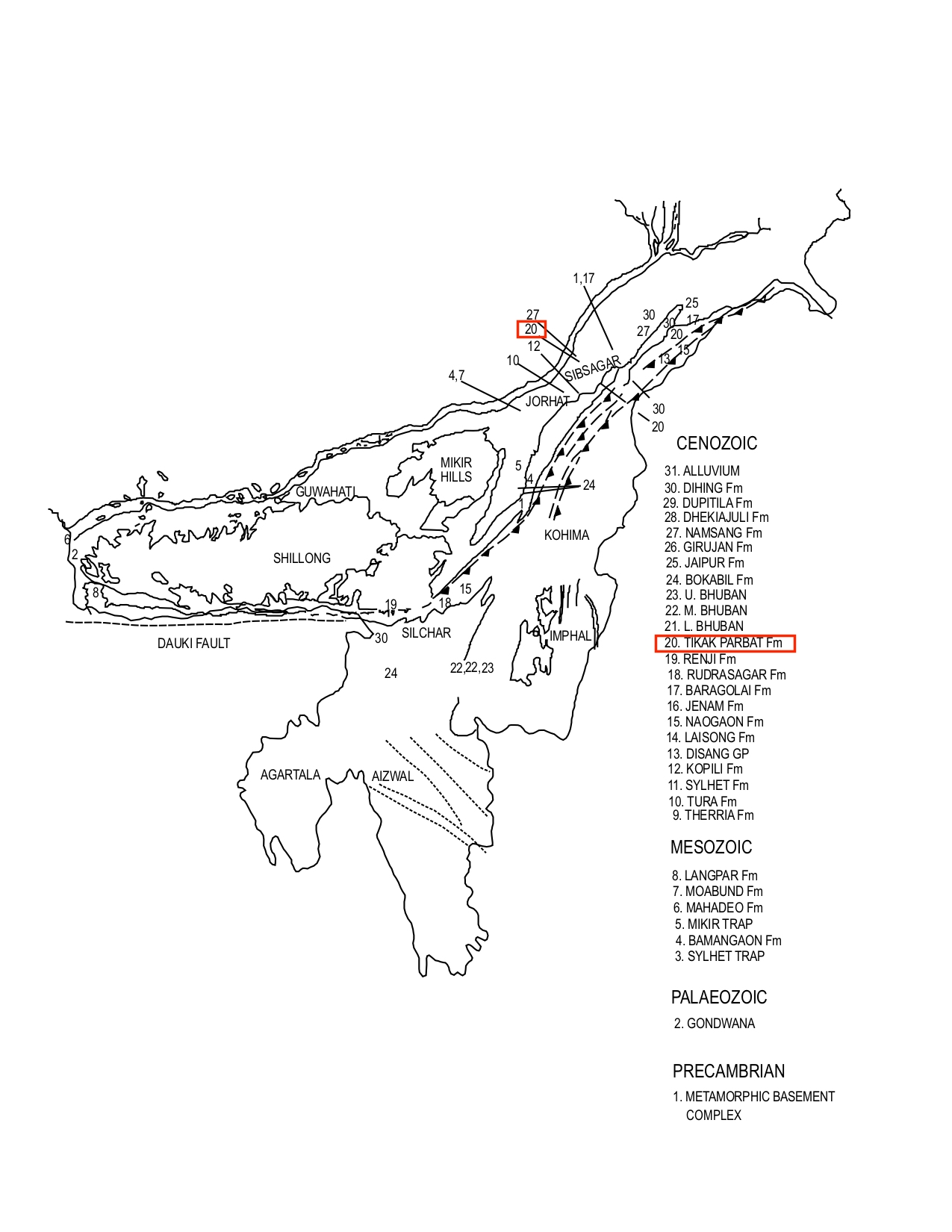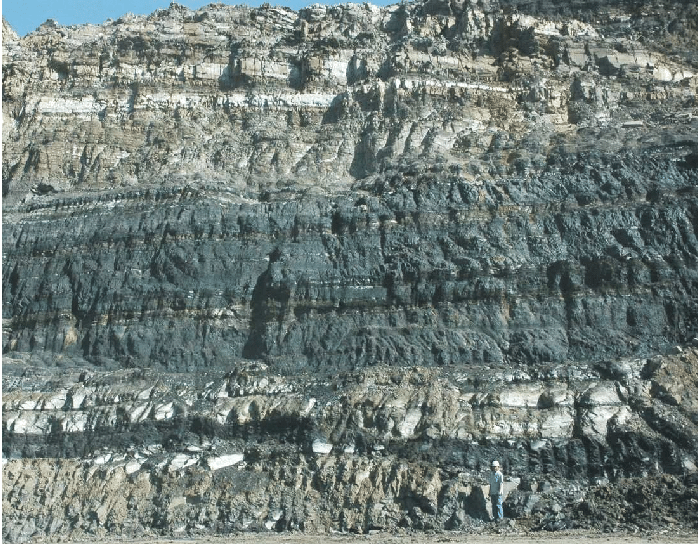Tikak Parbat Fm
Type Locality and Naming
Type section is in the Namdang-Ledo area of Makum coal field (Deshpande et al., 1993). [Original Publication: Evans P. 1932: Tertiary succession in Assam, Trans. Min. Geol. Inst. India, vol.27, pp.155.]. Reference well: Tipang Valley
Synonyms: Evans (1932) separated Coal Measures of Mallet (1876) into two stages Baragolai and Tikak Parbat Stages. This stage was named after Tikak Parabat from Makum Coal fields area. It is a lithostratigraphic unit of formation rank in current usage, although it is very much a part of coal measures and, hence, better be ranked as a member.
[Figure 1: Formation stratotypes of North East Basins (modified after Pandey and Dave, 1998)
Lithology and Thickness
Coal and sandy claystone. Type section: In type area, near the base of this formation thick coal seams are present, forming a part of interbedded sequence of carbonaceous shale, sandy shale and thin sandstones. This sequence is overlain by interbedded sandy mudstones, shales and hard sandstones with thin coal seams. Reference section: In the lithologic succession in reference section, a thick coal seam is present at the base, which is overlain by interbedded sequence of mudstones, carbonaceous shales, thin coal seams and thin sandstones. Maximum thickness of 570 m is observed in the Namdang area, which gradually reduces to about 180 m in Dikhu river section.
[Figure 2: Exposed section from the Tirap colliery, Makum coalfield, Assam (after Srivatsava and Mehrotra (2015)]
[Figure 3: Sequence boundaries Sb2 and Sb3 Namdang area, (After Devojit Bezbaruah, 2013)]
Relationships and Distribution
Lower contact
Gradationally overlies Baragolai Fm
Upper contact
The upper contact is unconformable with the Tipam Gr.
Regional extent
Naga Schuppen Belt??
GeoJSON
Fossils
Age
Depositional setting
Deltaic.
Additional Information


